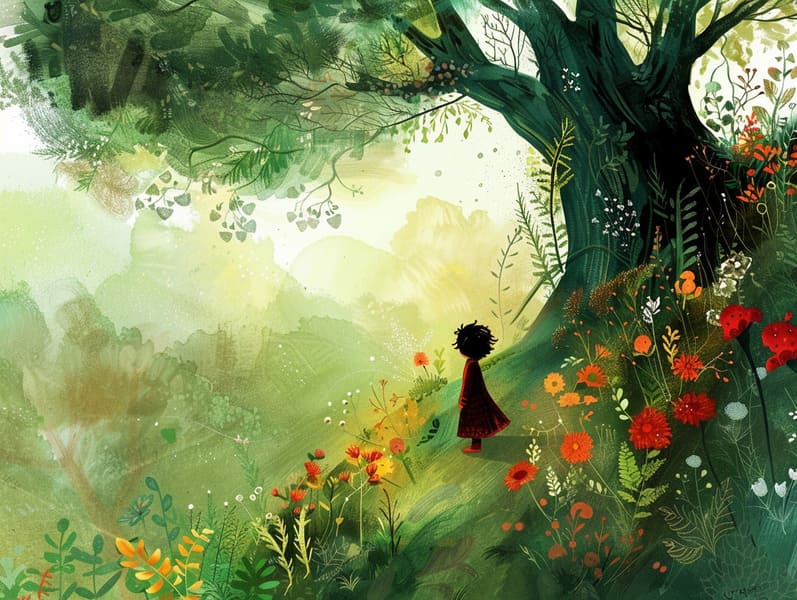The Inception of Timeless Fairy Tales and Its Perpetual Appeal.
The Inception of Timeless Fairy Tales and Its Perpetual Appeal.
Blog Article

Short fairy tales have long histories. These stories have been transmitted from one generation to the next millennia before they were ever written down. They originated from a variety of backgrounds, including Middle Eastern traditions. They were initially conveyed among grown-ups, often carrying themes and messages aligned with the societal norms and beliefs of the time.
The Grimm brothers, Jacob and Wilhelm Grimm, were among the first to gather and publish many of these beloved narratives. Their published works, "Grimm's Fairy Tales," included stories like "The Little Glass Slipper," "Hansel and Grethel," and "Snow-White and Rose-Red," which have since become staples in the world of iconic fairy tales. Similarly, the Danish author's fantastical narratives, such as "The Story of the Little Mermaid," and "The Duckling that Could," have enchanted hearts worldwide, establishing their place in the pantheon of classic fairy tales.
Despite their historical roots, traditional fairy tales remain as relevant as ever, especially as children's bedtime stories. These magical stories are now available in many formats, including colorful picture books, captivating animations, and free fairy tales online.
Their enduring popularity can be credited to several enchanting factors:
Vital Lessons: Ancient fairy tales often share important moral lessons. Tales like "The Story of the Boy Who Cried Wolf" teach the merit of integrity, while "The Tortoise and the Hare" demonstrate the benefits of determination and humbleness. These stories offer young readers clear distinctions between moral and immoral, building their moral compass in a kind yet important way.
Empathy and Understanding: Timeless fairy tales frequently showcase beings facing challenges and struggles, urging audiences to connect with their struggles and applaud their triumphs. For instance, "The Tale of Beauty and the Beast" emphasizes the benefit of seeing inner beauty to acknowledge the inner self of a individual, fostering insight and awareness.
Cultural Recognition: Many fairy tales are rich in the cultural contexts from which they emerged. Immersing in these tales can provide illuminating insights into different ways of life, developing a sense of world appreciation and discernment.
Inventiveness and Fantasy: The magical elements in traditional fairy tales—mythical entities—motivate children’s creative minds. These tales lead readers to enchanted realms, motivating fantastical thinking and a sense of curiosity that endures a lifetime.
Traditional fairy tales are not only fascinating but also pedagogical. They act as magical tools in enhancing various cognitive and emotional skills in kids. When ancient fairy tales are told out loud, they promote speaking abilities by bringing new language items and sophisticated sentence structures. This practice also boosts listening abilities and focus, as children hang on every word, prepared to see what happens next.
Furthermore, conversing about the themes and characters of website ancient fairy tales can develop thinking skills and intellectual skills. Little ones are educated to notice patterns, anticipate outcomes, and get cause and effect. These discussions also assist children say their thoughts and feelings, cultivating their emotional intelligence.
In today’s electronic age, the presence of internet fairy tales has made these narratives more within reach than ever. Online resources and mobile apps share extensive collections of old fairy tales that can be viewed or listened on anytime, anywhere. Fairy tales read out loud are particularly sought after, providing an delightful method for the young to be a part of these mesmerizing stories. Read-aloud books and read-to-me stories lead characters and settings to life, often paired with bewitching harmonies and harmonies that enhance the story adventure.
The unending appeal of timeless fairy tales lies in their ability to evolve to modern society while staying true to their central messages. Contemporary revisions of these fairy tales often showcase more inclusive protagonists and modern settings, making them accessible to today’s audience. However, the main ideas of braveness, generosity, and integrity remain unchanged, continuing to appeal to readers of all ages.
Old fairy tales also offer a sense of comfort and closeness. They supply a well-ordered narrative with a straightforward beginning, middle, and end, often wrapping up with the settlement of conflicts and the triumph of righteousness over wickedness. This certainty can be relieving for the young, rendering a sense of steadiness in an variable world.
Ancient fairy tales continue to entrance and coach new generations, maintaining their spell and impact in modern society. As children's bedtime stories, they showcase a perfect blend of fascination and comprehension, advancing moral values, empathy, and creativity. The prevalence of digital fairy tales and the likability of fairy tales read aloud affirm that these traditional fairy tales remain accessible to new generations.
By continuing and releasing these fairy tales, we continue to appreciate the rich tapestry of tradition and cultural heritage. Whether you are delving into a richly illustrated book, delving into a cyber library, or listening via an audiobook, the elegance of traditional fairy tales is always within reach. These stories convey of the lasting effect of fairy tales and its ability to bring us together across centuries and lands.
Whether you are browsing a beautifully illustrated book, seeing a online collection, or listening through an read-aloud book, the splendor of classic fairy tales is always within reach.
These stories show us of the unchanging strength of storytelling and its ability to draw us together across epochs and places, creating a bond that captivates and teaches alike.